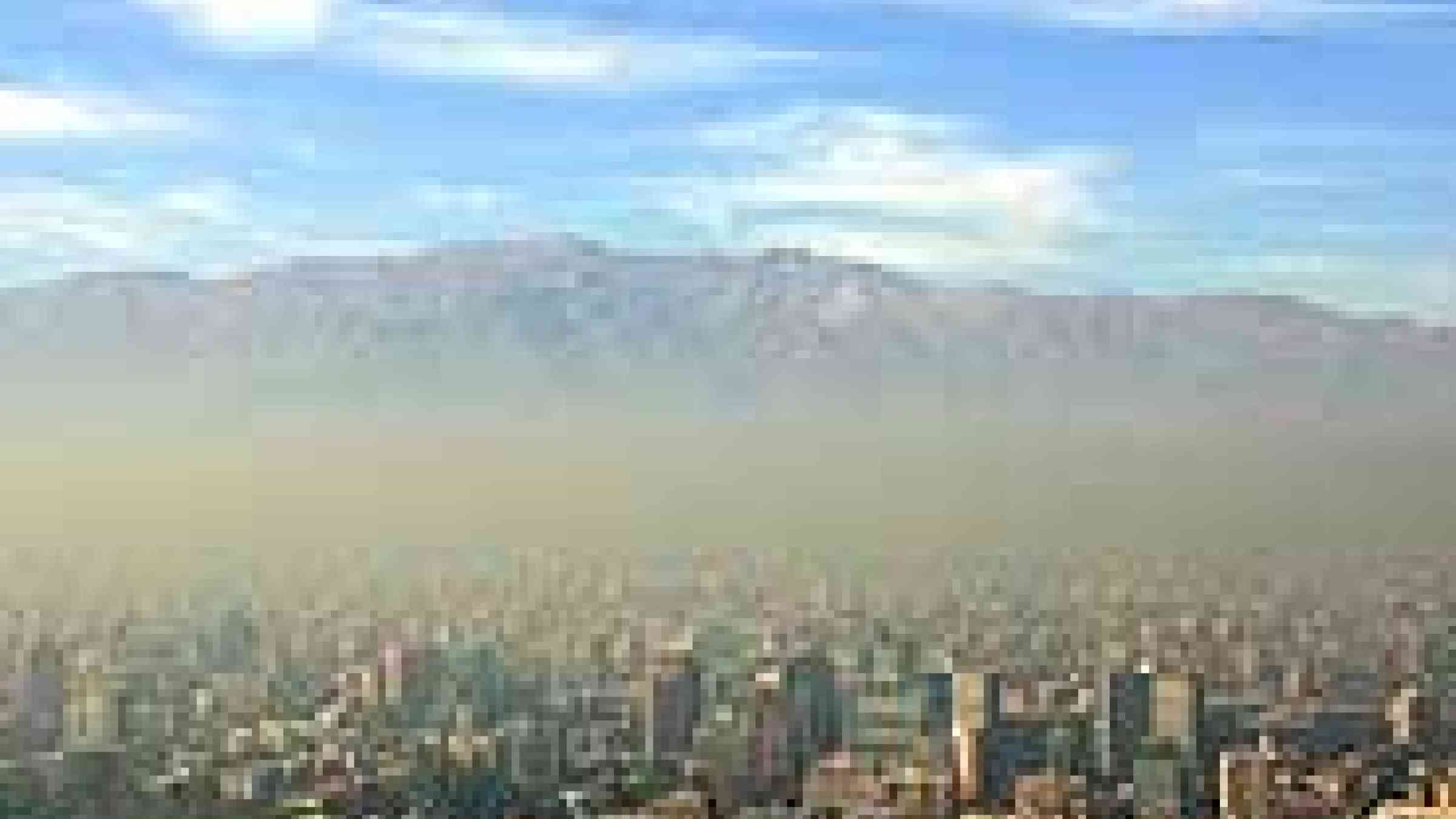Please help us improve PreventionWeb by taking this brief survey. Your input will allow us to better serve the needs of the DRR community.
World Meteorological Day 2009: Weather, climate and the air we breathe

photo by Hernan Precht Bañados, Creative Commons Attribution-Noncommercial-Share Alike 2.0 Generic
Geneva – On the occasion of World Meteorological Day 2009 taking place worldwide on 23 March, the World Meteorological Organization (WMO) is calling attention to the interaction between weather patterns, climate and air quality. Gases and particles emitted to the atmosphere affect people’s health, as well as weather and climate.
The theme of this year’s World Meteorological Day is “Weather, climate and the air we breathe” and highlights the work of its 188 Members’ National Meteorological and Hydrological Services in air quality data, research and forecasts.
“National Meteorological and Hydrological Services are working together in collecting and assessing air-quality data and enhancing modeling capabilities that are essential for forecasting atmospheric pollution and for protecting communities against its health and economic impacts,” WMO Secretary-General Michel Jarraud said. WMO has been actively involved in international efforts to assess our evolving atmosphere in terms of air pollutants such as ground-level ozone, smog, particulate matter, sulphur dioxide and carbon monoxide and dioxide, most of which have directly resulted from the industrial, urban and vehicular combustion of fossil fuels.”
As scientists analyse more data, they increasingly understand how closely air quality is connected to the weather-climate system. Weather variables control the transport and longevity of pollutants around the globe. The more scientists understand the weather-climate system, the better they are able to forecast the distribution of potentially harmful atmospheric particles and gases. The World Health Organization has estimated that an average of two million people die prematurely every year due to air pollution. At the same time, by taking into account the composition of the atmosphere, meteorologists are better able to make short-term weather forecasts and long-term climate predictions.
The WMO Global Atmosphere Watch (GAW) networks of stations collect data on greenhouse gases, such as carbon dioxide and methane, aerosols and reactive gases, including ozone, nitrogen oxides and sulphur dioxide. These observations work in concert with the vast weather, climate and water observational networks coordinated through the WMO Integrated Observing System. National Meteorological and Hydrological Services use the data collected to produce air quality forecasting products, including air quality indexes that summarize the concentrations of several pollutants. GAW and the WMO World Weather Research Programme are expanding the suite of air quality services currently available, and work continues to better understand the effects of air pollution in various settings.
Additionally, scientists are increasingly incorporating the gases and particles emitted by human activities into climate models to better project future changes. The WMO/UNEP co-sponsored Intergovernmental Panel on Climate Change (IPCC) concludes that the average global air surface temperature has increased about 0.74 degrees Celsius from 1905 to 2005. A warming climate can exacerbate air pollution. For example, climate change and land use are expected to increase desertification worldwide, thus increasing risk of sand and dust storms. Climate change models indicate that particle-producing fires will continue to increase in both frequency and intensity with rising global temperatures, as well as the risk of drought, which can lead to more fires.
World Climate Conference-3, which will be held in Geneva, Switzerland, from 31 August to 4 September 2009, will further explore the links between climate and health, especially looking at the impacts of climate variability and change on the occurrence of climate extremes. The Conference will engage scientists with decision-makers and policy-makers from the public and private sectors, with a session on climate and human health planned for 1 September.
For more information please contact:
Ms Carine Richard-Van Maele, Chief, Communications and Public Affairs, Tel.: +41 (0)22 730 83 15; Email:cpa[at]wmo.int
Ms Gaëlle Sévenier, Press Officer, Communications and Public Affairs, Tel. +41 (0) 22 730 8417. E-mail: gsevenier[at]wmo.int;
Ms Lisa Munoz, Press Officer, Communications and Public Affairs, Tel. +41 (0) 22 730 8213. E-mail: lmunoz[at]wmo.int
Explore further
Please note: Content is displayed as last posted by a PreventionWeb community member or editor. The views expressed therein are not necessarily those of UNDRR, PreventionWeb, or its sponsors. See our terms of use
Is this page useful?
Yes No Report an issue on this pageThank you. If you have 2 minutes, we would benefit from additional feedback (link opens in a new window).